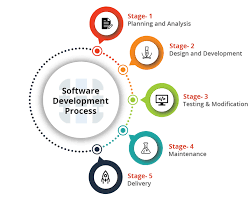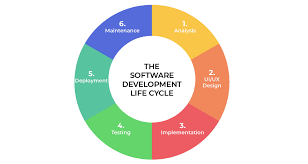Empowering MLM Businesses: Leading MLM Software Development Company Delivers Custom Solutions
Welcome to MLM Software Development Company
MLM (Multi-Level Marketing) software plays a crucial role in managing and automating the operations of MLM businesses. A reliable MLM software development company can provide customized solutions tailored to the specific needs of MLM companies.
What Does an MLM Software Development Company Offer?
An MLM software development company specializes in creating software solutions that facilitate various aspects of multi-level marketing businesses. These companies offer a range of services, including:
- Custom MLM software development
- MLM website design and development
- Integration of payment gateways
- MLM plan consultation and customization
- Support and maintenance services
Benefits of Choosing a Professional MLM Software Development Company
Working with a professional MLM software development company offers several benefits, such as:
- Customized Solutions: Tailored software solutions that align with the unique requirements of your MLM business.
- Scalability: The ability to scale the software as your business grows and evolves.
- Technical Expertise: Access to experienced developers who understand the intricacies of MLM software development.
- Support and Maintenance: Ongoing support and maintenance services to ensure the smooth functioning of your MLM software.
- Innovative Features: Incorporation of innovative features and functionalities to enhance the efficiency and performance of your MLM operations.
Conclusion
A reliable MLM software development company can be a valuable partner for your multi-level marketing business. By leveraging their expertise and customized solutions, you can streamline your operations, improve efficiency, and achieve greater success in the competitive world of MLM.
6 Essential Tips for Developing Effective MLM Software
- Understand the MLM business model thoroughly before starting development.
- Ensure compliance with legal regulations related to MLM operations.
- Focus on creating a user-friendly interface for both administrators and network members.
- Implement robust security measures to protect sensitive data and transactions.
- Provide comprehensive training and support for users to maximize adoption and satisfaction.
- Regularly update and improve the software based on user feedback and industry trends.
Understand the MLM business model thoroughly before starting development.
Before embarking on the development of MLM software, it is crucial to have a deep understanding of the MLM business model. By comprehensively grasping the intricacies and dynamics of multi-level marketing, developers can tailor the software to effectively support and enhance the unique structure and requirements of MLM businesses. This foundational knowledge ensures that the software aligns seamlessly with the operational needs and goals of the MLM company, ultimately leading to a more successful and efficient implementation of the software solution.
Ensure compliance with legal regulations related to MLM operations.
It is crucial for MLM software development companies to ensure compliance with legal regulations related to MLM operations. Adhering to laws and regulations governing multi-level marketing not only helps protect the business from potential legal risks but also builds trust with clients and stakeholders. By staying abreast of the latest legal requirements and incorporating them into the software solutions they develop, MLM software development companies can help their clients operate ethically and within the boundaries of the law.
Focus on creating a user-friendly interface for both administrators and network members.
When developing MLM software, it is essential to prioritize the creation of a user-friendly interface that caters to the needs of both administrators and network members. A well-designed interface not only enhances user experience but also improves efficiency and productivity. By focusing on simplicity, intuitiveness, and functionality, MLM software development companies can ensure that users, whether administrators managing the system or network members using it daily, can navigate the platform seamlessly and perform their tasks with ease.
Implement robust security measures to protect sensitive data and transactions.
It is crucial for MLM software development companies to implement robust security measures to safeguard sensitive data and transactions. By prioritizing security, companies can protect confidential information, financial transactions, and user privacy from potential threats and cyberattacks. Implementing encryption protocols, secure authentication methods, regular security audits, and compliance with data protection regulations are essential steps to ensure the integrity and trustworthiness of the MLM software system. By investing in strong security measures, MLM businesses can build a secure environment for their users and maintain a reputation for reliability and trust.
Provide comprehensive training and support for users to maximize adoption and satisfaction.
To maximize adoption and satisfaction, it is essential for an MLM software development company to provide comprehensive training and support for users. By offering thorough training sessions and ongoing support, users can better understand the software’s features and functionalities, leading to increased adoption rates. Additionally, prompt and effective support services can address any issues or concerns that users may encounter, enhancing overall satisfaction with the MLM software solution. Investing in user training and support demonstrates a commitment to customer success and can ultimately contribute to the long-term success of the MLM business.
Regularly update and improve the software based on user feedback and industry trends.
To ensure the success and relevance of an MLM software development company, it is essential to prioritize regular updates and improvements based on user feedback and industry trends. By actively listening to user suggestions and staying informed about the latest developments in the MLM industry, the company can enhance its software to meet evolving needs and stay competitive in the market. Continuous improvement not only enhances user satisfaction but also demonstrates a commitment to innovation and excellence in providing cutting-edge solutions for MLM businesses.






